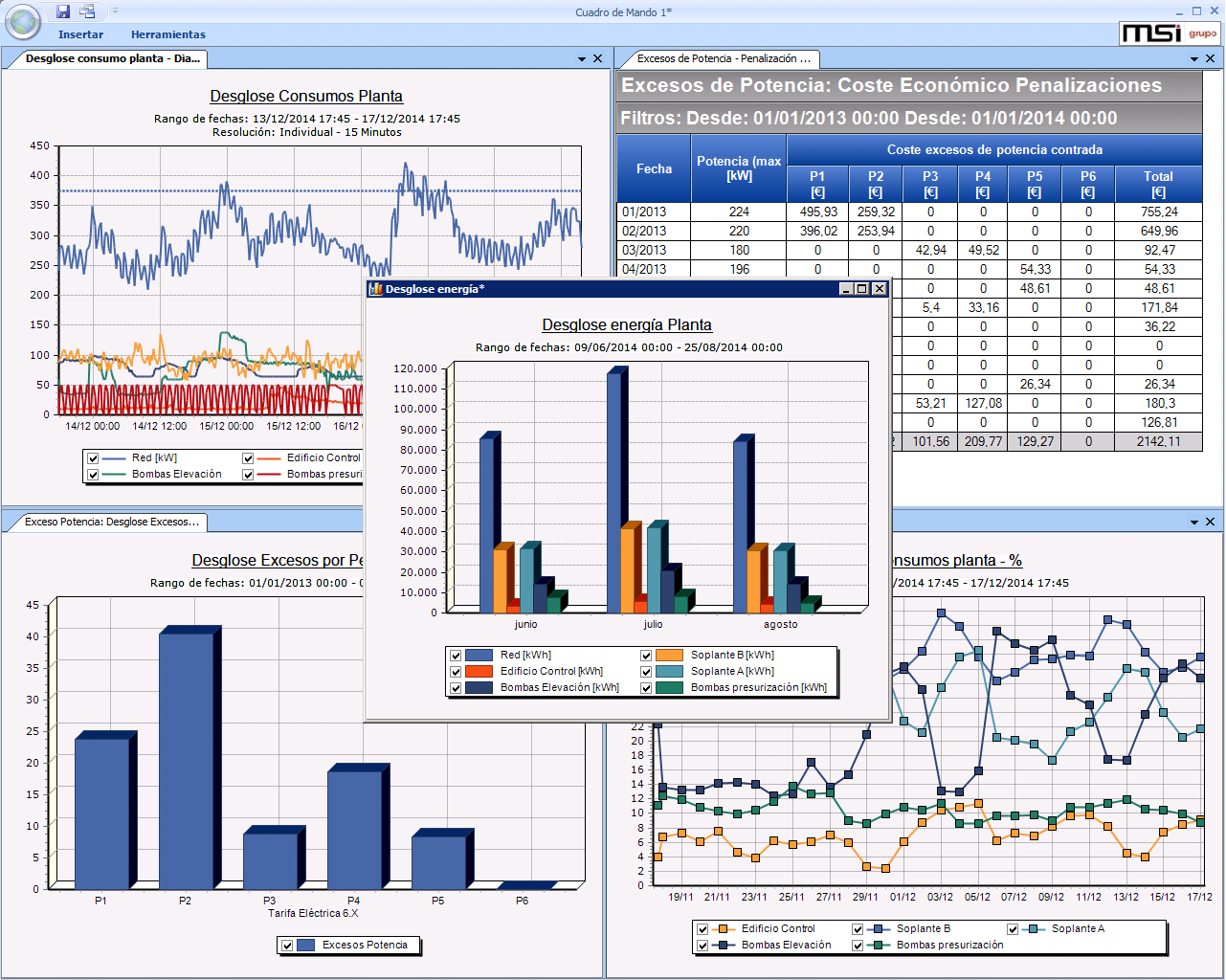 In 2014, MSI-Grupo in close collaboration with CEIT-IK4 under the FP7 DIAMOND project, completed the art-ICA controllers with a data management functionality transforming it in a integrated automation solution of energy efficiency especially designed for wastewater treatment plants (WWTPs). This new release is called art-ICA 2.0, and has, besides the art-ICA controllers, a broad functionality for data acquisition, analysis and visualization by means of a graphical user interface with Key Performance Indicators (KPIs). More information on this data management can be found at www.eficienciaenergeticaedar.com.
In 2014, MSI-Grupo in close collaboration with CEIT-IK4 under the FP7 DIAMOND project, completed the art-ICA controllers with a data management functionality transforming it in a integrated automation solution of energy efficiency especially designed for wastewater treatment plants (WWTPs). This new release is called art-ICA 2.0, and has, besides the art-ICA controllers, a broad functionality for data acquisition, analysis and visualization by means of a graphical user interface with Key Performance Indicators (KPIs). More information on this data management can be found at www.eficienciaenergeticaedar.com.
The art-ICA controllers play obviously an important role in the art-ICA 2.0 suite, especially in the optimisation of the biological process. The art-ICA controllers are an advanced process control solution that combines online sensors with control technology to automatically optimise the operation of WWTPs. The art-ICA product implements three feedback controllers, where each one is in charge of keeping the following three process variables close to predefined set-points:
- The Total Mass of Suspended Solids (TMSS) in the biological treatment;
- The concentration of Nitrates (NO3-N) at the end of the denitrification zone;
- The Ammonium (NH4-N) in the last aerated tank.
Each controller works by simultaneously performing a real-time adaptation of the three most relevant actuators featured in conventional Biological Nutrient Removal (BNR) systems (see Figure 1), namely, the sludge surplus pump (QWS), the internal recycling pump (QRI) and the external air supply (QAE). The benefit that this advanced multivariable controller brings to WWTPs is two-fold:
✔ Better quality treated water;
✔ Savings in exploitation costs, such as those related to the consumption of electrical energy, reactants and chemical by-products.
The art-ICA controllers have been developed for application to pre-denitrification/nitrification plant designs (also known as conventional BNR systems), which represents the most common type of plant-layout found in full-scale BNR WWTPs in Spain, Portugal and the European Union.
It is well known that the way the above actuators are operated completely determines the performance of these systems and, more specifically, the quality of the treated effluent and the energy consumed in the treatment. The flow and composition of wastewaters generally present large and permanent fluctuations that require real-time adaptation of the actuators in order to optimise treatment.
The control product art-ICA performs this task by continuously adjusting the flow-rates for the sludge surplus, for the internal recycling and for the external air supply to the values that preserve the quality of the water discharges while minimising the use of energy.
Figure 2 uses a block representation to illustrate the three feedback controllers that take part in the art-ICA control solution. The hardware and software architecture of the art-ICA controllers is basically made up of a Microsoft Windows-based PC that runs the controller algorithms and the Human–Machine Interface (HMI) software used to configure the product and monitor its performance (Figure 3).
Because of the slow dynamics of biological treatment processes, the sampling time at which the internal operations of these three algorithms must be periodically executed is in the range of seconds to minutes. Therefore, in terms of computational requirements, the standard medium-range PC that forms the core hardware of the art-ICA controllers is more than enough to accommodate the real-time operations executed by the control algorithms.
The art-ICA 2.0 product provides user-friendly software with plant performance monitoring functions and data analysis techniques ready for detailed analysis of the biological process. Moreover, this software has recently been complemented with cloud-based plant performance monitoring, which allows MSI-Grupo to remotely maintain, update, optimise and compare different plants where the art-ICA 2.0 have been installed.
This means that WWTPs have the option of purchasing the art-ICA controllers either as a product locally installed at the plant or as a service located in the cloud. In terms of pricing, this gives us the flexibility to accommodate the specific needs of consumers. However, the feasibility of these two business approaches and their acceptance in the market needs to be evaluated.



